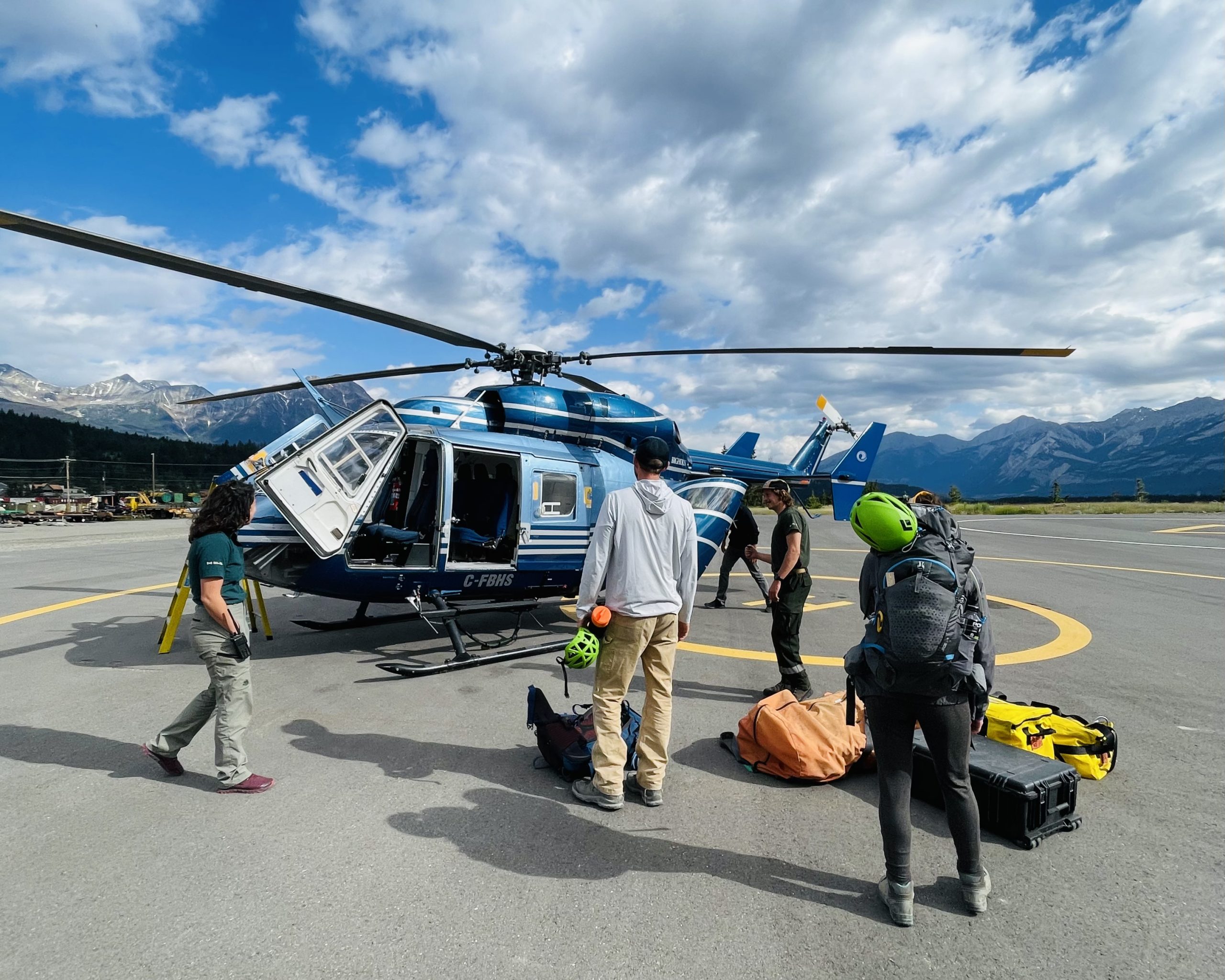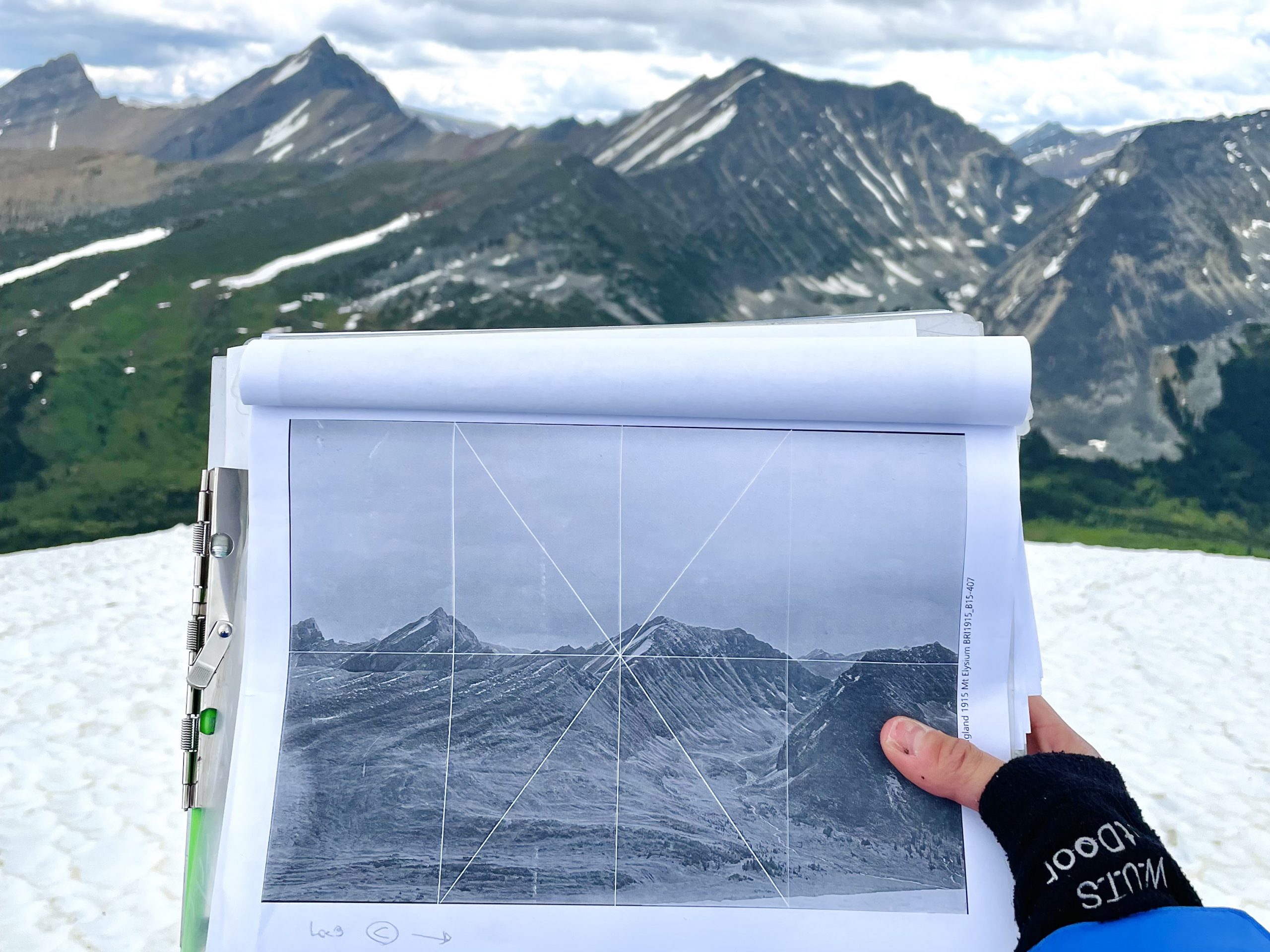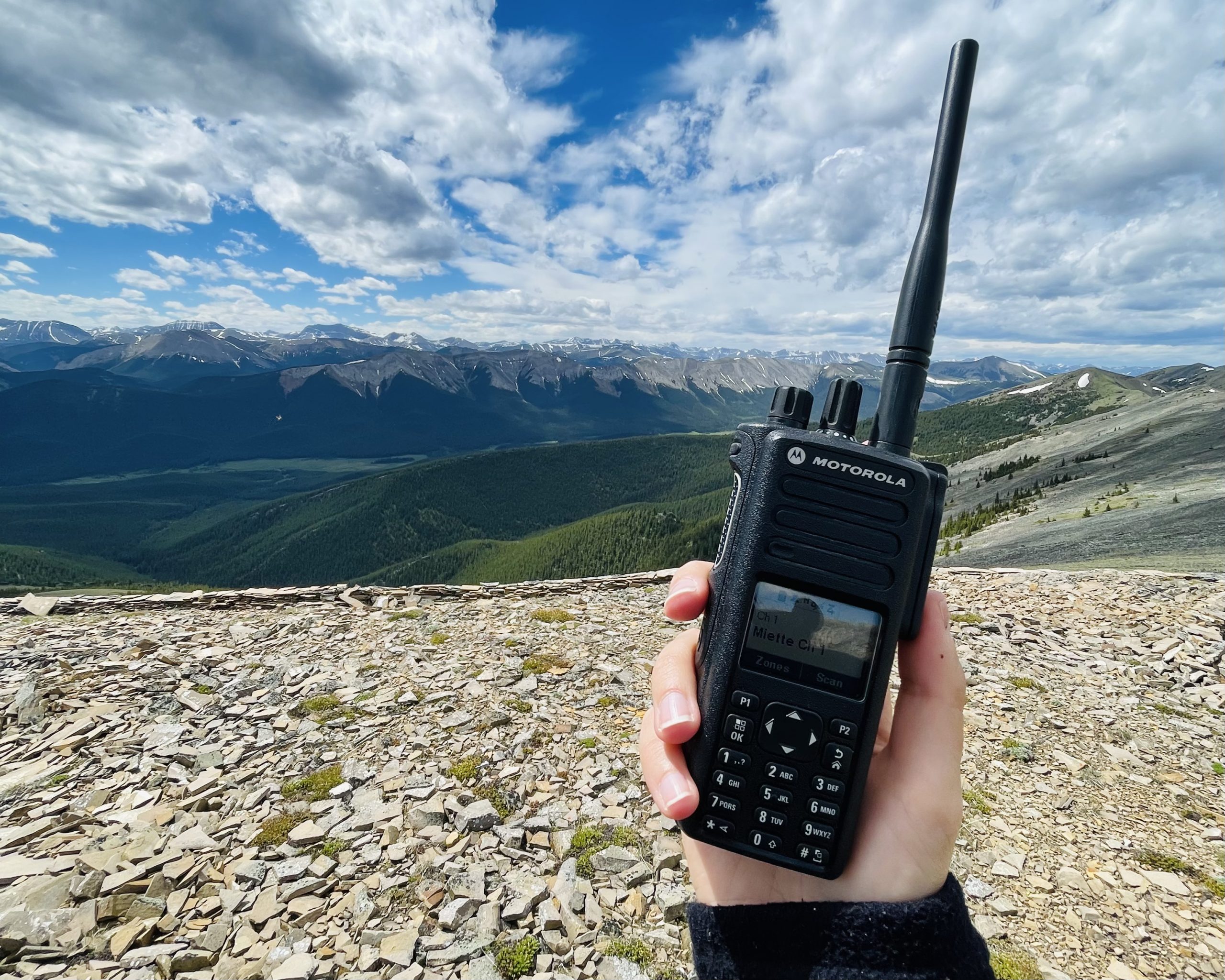In the summer of 2022, James Tricker, Catalina Madrid, and myself, went out into the field in Jasper National Park for a month-long period to complete 26 stations in Jasper’s three main valleys (Tricker’s study location). Our arrival in Jasper was prefigured by months of detailed planning and we knew going in that some of the stations we hoped to complete would only be possible if we could secure a helicopter ride. But that luxury was not guaranteed. Helicopters are expensive and when we end up in a heli it’s usually thanks to the generous support of our partners. Mountain Legacy Project (MLP) researchers and field teams have been working closely with Parks Canada for decades. These relationships are essential to a successful field season, as Parks provides input and support that plays a big role in getting the job done safely. Occasionally, they also coordinate helicopter rides for MLP teams to reach remote stations. Fortunately, they were able to provide us with a heli ride to mount Elysium in the Victoria Cross Range, which is difficult to reach as the railway blocks access, and there are areas of high exposure.

The morning we departed, I felt a rush of excitement as I waited by the helicopter, preparing for my first-ever drop off on a mountain. I was eager to get started, but knew that I had to pay close attention to the ground rules and steps necessary to get on board and delivered safely. While waiting, it’s important to be properly packed and dressed, making sure that nothing is loose and hanging from your outfit, because there’s a good chance it could get blown away in the wind generated by the rotors. You also need to remember that the pilots are always in charge, and my team looked for their signals prior to approaching the craft. Before boarding, there is one more, extremely important consideration: bear spray. This is dangerous to have inside the cabin since it might explode under pressure, so you need to make sure you’re not bringing it in. In some helicopters, there’s a small basket container hanging outside the cabin where you can place your personal gear or backpacks, and bear sprays are allowed to be kept there. This was the case with our craft. Once on board, it was time to buckle up, put on the aviation headset, and stay in contact with the pilot. Even with the headset, the loud noise of the engine inside the cabin makes hearing difficult. I really had to concentrate on listening in order to follow discussions, including crucial pilot communications.
Within moments, we were in the air. It was a surreal feeling as the helicopter lifted off the ground and I was soaring through the sky, getting an incredible bird’s-eye view of the landscape below. During our flight to Mount Elysium we viewed some adjacent stations in the Victoria Cross Range to get a good idea of possible landing locations should the opportunity for another heli outing present itself. For Mount Henry and Mount Cairngorn, the pilot had to do a full turn around the peaks and fly very close to the mountains to get a good sense of suitable landing locations. Observing the amount of exposure around the pinnacles of Henry and Cairngorn added extra boosts of adrenaline as I imagined how teams before were roped in successfully, made it to the top and managed to get the job done. The views were beyond words and spotting surveyor-built cairns from the top was an unbelievable experience.

As we approached our destination, the pilot landed in an open meadow close to the station. Once we got out, there was no time to waste. We needed to start right away, figuring out camera locations, setting up the tripod, and getting the images for three different locations within the timeframe we had. Knowing we must finish before the helicopter was scheduled to return definitely added some extra pressure. But in the end, we were able to complete the repeat photographs with a bit of time to spare, a perfect opportunity to enjoy the views and solitude on top of a mountain. With our work complete, we more or less followed our usual communication protocols. Our main contact during field days was Jasper dispatch (using a radio), and to keep in touch with the pilot we used call signs. For example, to contact the pilot for pickup, we connected with Jasper dispatch, used our call sign (ML2) to indicate who we are, and asked for a pickup from C-FBHS (the helicopter’s call sign). Jasper dispatch connected to the pilot and then let us know that C-FBHS was on the way.

Before long, we were packed and ready to go, seated on the ground, close to each other, with our backpacks covered while we waited for the pilot to land close by. When it was safe to do so, we loaded into the heli and headed back to base. Once again, the experience of being up in the air and looking down at the breathtaking views made me feel a deep appreciation for all the hard work of the original surveyors and all the dedicated MLP crews. While the entire field season was memorable and presented me with a series of first experiences (my first time in the Rockies, first time conducting repeat photography), my first time in a helicopter was an epic experience.
